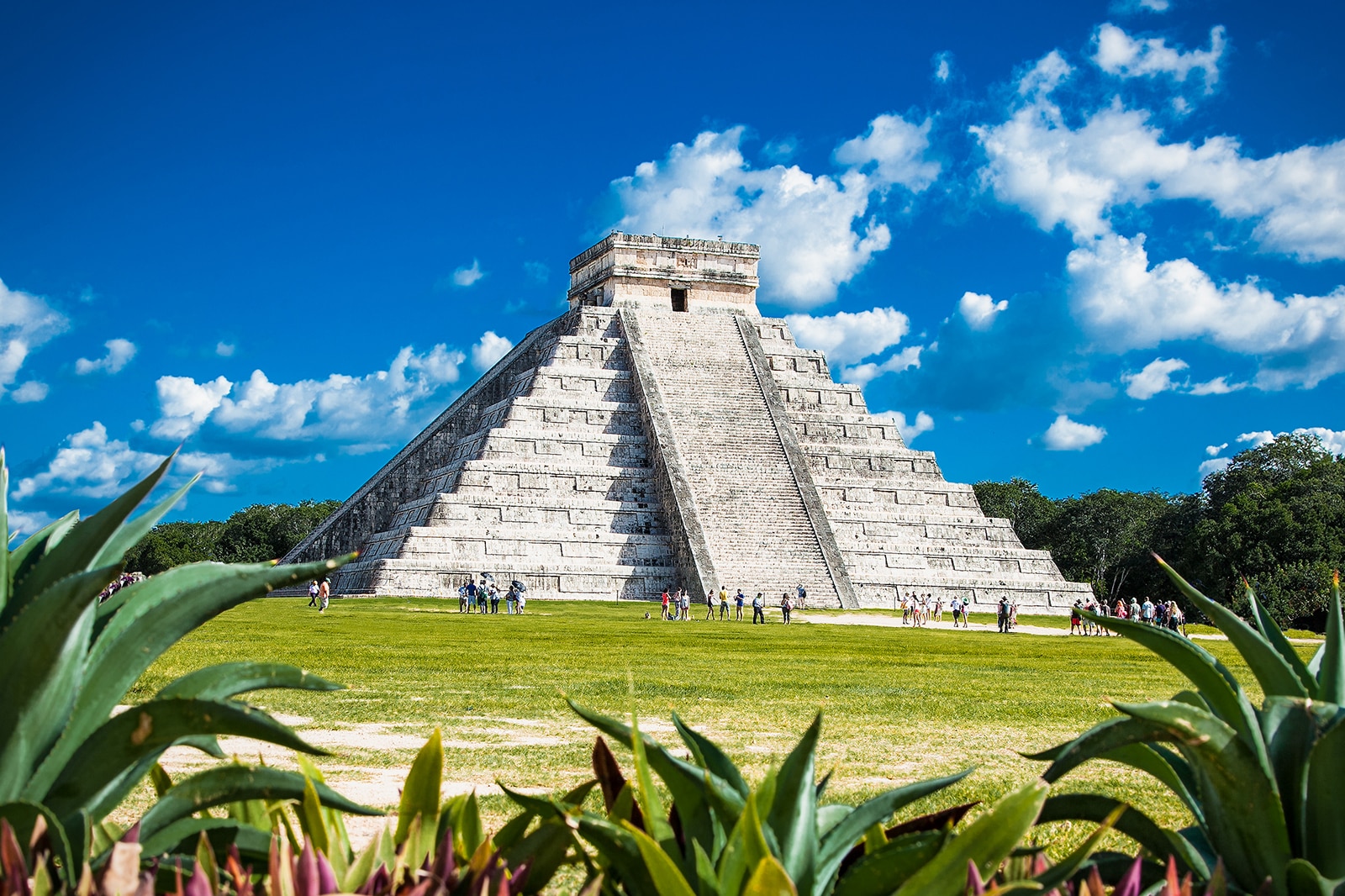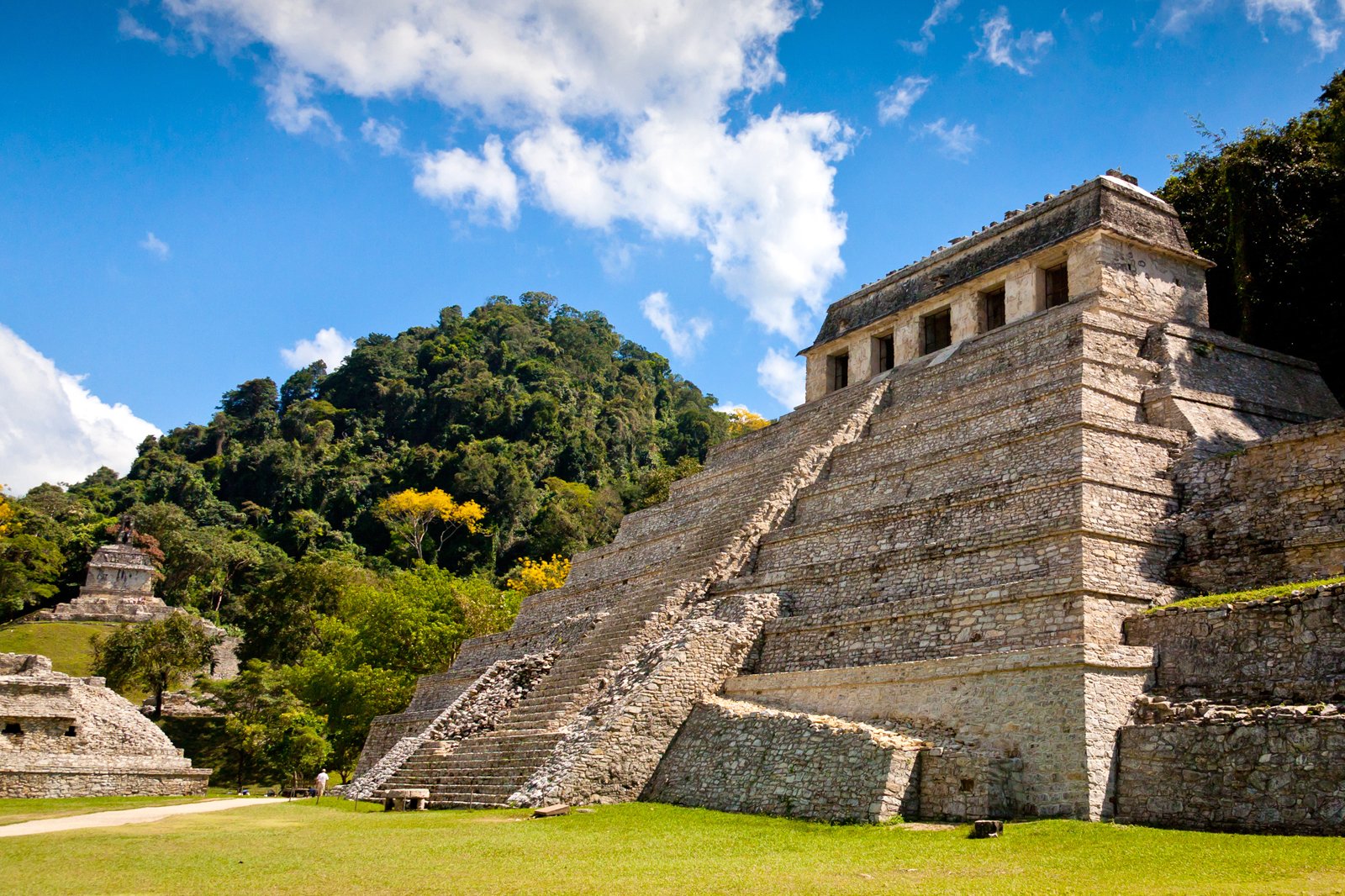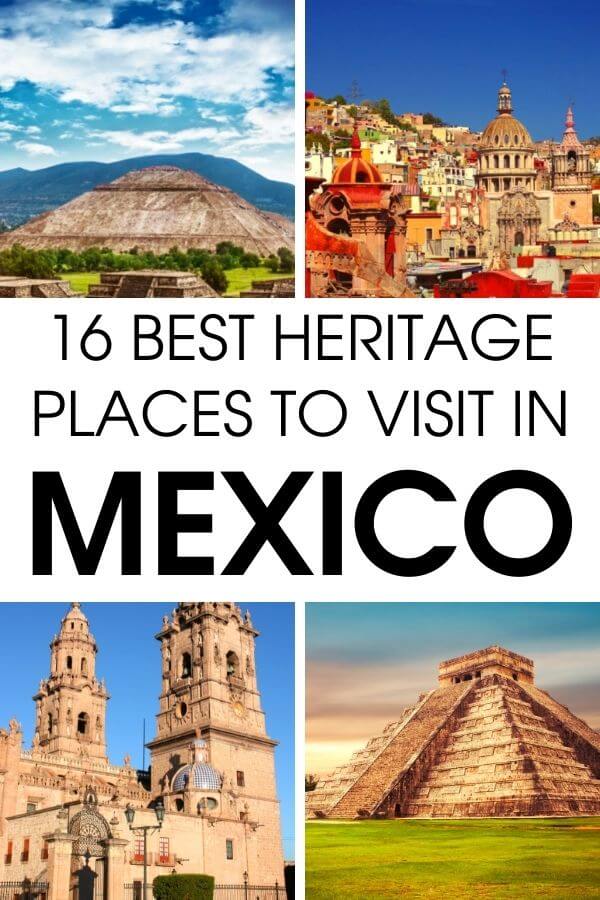So, have you ever wondered about the rich cultural heritage of Mexico? Well, you’re in for a treat! Mexico is home to a plethora of UNESCO World Heritage Sites that showcase its vibrant history and diverse culture. From ancient ruins to breathtaking natural landscapes, there’s something for everyone to explore and learn about.
In this article, we’ll delve into the fascinating world of Mexico’s UNESCO World Heritage Sites. Whether you’re planning a trip to Mexico or simply have a curiosity for cultural landmarks, this guide will take you on a virtual journey through some of the country’s most significant sites. From the stunning Mayan city of Chichen Itza to the colorful colonial town of Guanajuato, get ready to discover the hidden gems of Mexico’s cultural heritage.
Stay tuned for an in-depth exploration of Mexico’s UNESCO World Heritage Sites, where we’ll dive into the history, significance, and must-see attractions of each location. From the picturesque beaches of Tulum to the awe-inspiring pyramids of Teotihuacan, you’ll gain a deeper understanding of Mexico’s rich heritage and the stories behind these remarkable sites. So, whether you’re a history buff, an avid traveler, or simply someone who appreciates the beauty of different cultures, this guide is for you!

Introduction to Mexico’s UNESCO World Heritage Sites
Mexico is a country known for its rich cultural heritage and historical significance. From ancient archaeological sites to stunning natural landscapes, Mexico boasts numerous UNESCO World Heritage Sites that are a testament to its diverse history and cultural richness. In this guide, we will take you on a journey to discover some of Mexico’s most remarkable UNESCO World Heritage Sites. Whether you are a history enthusiast, nature lover, or simply looking for a unique travel experience, Mexico’s UNESCO World Heritage Sites are sure to captivate your imagination.
What are UNESCO World Heritage Sites?
UNESCO (United Nations Educational, Scientific and Cultural Organization) World Heritage Sites are places of outstanding universal value that are recognized and protected by UNESCO for their cultural, historical, or natural significance. These sites represent the collective heritage of humanity and are considered to be irreplaceable. Mexico is home to a remarkable number of UNESCO World Heritage Sites, reflecting its cultural diversity and the importance it holds in the world.

Significance of UNESCO World Heritage Sites in Mexico
Mexico’s UNESCO World Heritage Sites play a vital role in preserving the country’s cultural heritage and attracting tourists from around the globe. These sites not only offer a glimpse into Mexico’s past but also contribute to its economic growth through tourism. By protecting and promoting these sites, Mexico can showcase its unique history and cultural traditions, fostering a sense of national pride and appreciation among its citizens. UNESCO World Heritage Sites in Mexico also serve as educational resources, providing valuable insights into the country’s historical and cultural development.
Historical Sites
Ancient City of Teotihuacan
One of the most iconic and well-preserved archaeological sites in Mexico, the Ancient City of Teotihuacan, is a must-visit for history buffs. Located just outside of Mexico City, this ancient city was once one of the largest and most influential in the pre-Columbian Americas. Known for its impressive pyramids, the Pyramid of the Sun and the Pyramid of the Moon, Teotihuacan offers a fascinating look into the lives of the ancient Mesoamerican civilizations that inhabited the area.
Historic Center of Mexico City and Xochimilco
As the capital and cultural hub of Mexico, Mexico City is a treasure trove of historical and architectural wonders. The Historic Center of Mexico City, also known as Centro Historico, is a UNESCO World Heritage Site that encompasses numerous landmarks and buildings of historical significance, including the stunning Metropolitan Cathedral, National Palace, and Templo Mayor. Adjacent to the historic center is Xochimilco, a picturesque network of canals and floating gardens that has been a UNESCO World Heritage Site since 1987.
Historic Center of Oaxaca and Archaeological Site of Monte Albán
Oaxaca City, located in the southern part of Mexico, is renowned for its colonial architecture and indigenous traditions. The Historic Center of Oaxaca, a UNESCO World Heritage Site, boasts beautifully preserved colonial buildings, including the striking Santo Domingo de Guzmán Church. Just outside the city lies the Archaeological Site of Monte Albán, an ancient Zapotec city that offers stunning panoramic views of the surrounding valleys.
Historic Center of Puebla
Puebla, a charming city in central Mexico, is famous for its well-preserved colonial architecture and rich culinary traditions. The Historic Center of Puebla is a UNESCO World Heritage Site that showcases the city’s colonial past through its beautifully decorated buildings, such as the Puebla Cathedral and the Casa de los Muñecos. Walking through the streets of Puebla’s historic center is like stepping back in time, with every corner revealing a piece of history.
Historic Town of Guanajuato and Adjacent Mines
Located in the heart of Mexico, Guanajuato is a picturesque colonial town known for its colorful buildings, winding streets, and underground tunnels. The Historic Town of Guanajuato and Adjacent Mines is a UNESCO World Heritage Site that encompasses the town’s historic center, which is filled with stunning examples of Spanish colonial architecture. The town’s famous landmark, the iconic Callejón del Beso (Alley of the Kiss), is a must-see for couples seeking a romantic spot.

Natural Sites
Sian Ka’an Biosphere Reserve
Tucked away on the eastern coast of the Yucatan Peninsula, the Sian Ka’an Biosphere Reserve is a haven for nature lovers. Designated as a UNESCO World Heritage Site in 1987, this vast protected area is home to diverse ecosystems, including tropical forests, mangroves, and underwater coral reefs. Visitors can explore the reserve’s pristine beaches, take a boat tour through its winding waterways, or go snorkeling to discover the vibrant marine life that inhabits the area.
El Pinacate and Gran Desierto de Altar Biosphere Reserve
Located in the Sonoran Desert in northern Mexico, El Pinacate and Gran Desierto de Altar Biosphere Reserve is a unique natural wonderland. This UNESCO World Heritage Site is characterized by its volcanic landscape, sand dunes, and rich biodiversity. Visitors can hike the trails that traverse the reserve, marvel at the stunning volcanic craters, or witness the breathtaking beauty of the desert dunes at sunset.
Whale Sanctuary of El Vizcaino
Off the coast of Baja California, lies the Whale Sanctuary of El Vizcaino, a UNESCO World Heritage Site that is home to one of the most important breeding grounds for the endangered gray whales. Every year, these magnificent mammals make their annual migration to the protected waters of El Vizcaino, offering visitors a once-in-a-lifetime opportunity to witness their majestic presence up close. Whale watching tours are available from the nearby town of Guerrero Negro.
Islands and Protected Areas of the Gulf of California
The Gulf of California, also known as the Sea of Cortez, is a biodiverse paradise that is home to numerous islands and protected areas. Designated as a UNESCO World Heritage Site in 2005, this area is renowned for its rich marine life, including dolphins, sea turtles, and migratory whales. Visitors can go diving or snorkeling in the crystal-clear waters, kayak through stunning rock formations, or relax on the pristine beaches of these idyllic islands.
Monarch Butterfly Biosphere Reserve
Located in the state of Michoacán, the Monarch Butterfly Biosphere Reserve is a natural wonder that attracts millions of monarch butterflies every year. These incredible creatures travel thousands of kilometers from Canada and the United States to the protected forests of Mexico, where they hibernate during the winter months. Witnessing the fluttering masses of butterflies is a truly awe-inspiring experience and a testament to the importance of preserving their habitat.
Archaeological Sites
Pre-Hispanic City of Chichen-Itza
Chichen-Itza, one of the most famous archaeological sites in Mexico, is a UNESCO World Heritage Site that dates back to the ancient Maya civilization. Located in the Yucatan Peninsula, this ancient city features remarkable ruins, including the iconic El Castillo pyramid, which is often referred to as the Temple of Kukulcan. The site also boasts a celestial observatory, a ball court, and a sacred well known as the Cenote Sagrado.
Pre-Hispanic City of Palenque
Deep in the jungles of Chiapas, lies the Pre-Hispanic City of Palenque, another remarkable UNESCO World Heritage Site. This ancient city was once a thriving Maya metropolis and is known for its exceptional architecture and intricate stone carvings. The Temple of the Inscriptions, the Palace, and the Temple of the Sun are among the most impressive structures in Palenque and provide fascinating insights into the lives and beliefs of the ancient Maya civilization.
Pre-Hispanic City and National Park of Palenque
Close to the Pre-Hispanic City of Palenque is the eponymous National Park, which is also a UNESCO World Heritage Site. The park encompasses the ancient city and its surrounding lush rainforests, making it a haven for nature lovers and history enthusiasts alike. Exploring the vast archaeological site while being surrounded by the sights and sounds of the jungle is an unforgettable experience that offers a true sense of adventure.
Pre-Hispanic Town of Uxmal
Located in the state of Yucatan, Uxmal is a lesser-known but equally impressive UNESCO World Heritage Site. The Pre-Hispanic Town of Uxmal is renowned for its well-preserved Maya architecture, including the awe-inspiring Pyramid of the Magician and the Governor’s Palace. The intricate stone carvings and intricate details of the buildings showcase the incredible craftsmanship and cultural significance of the ancient Maya civilization.

Colonial Architecture
Historic Town of Zacatecas
Zacatecas, a charming city in central Mexico, is a testament to the country’s colonial past. The Historic Town of Zacatecas is a UNESCO World Heritage Site that showcases the city’s rich architectural heritage, with its magnificent cathedral, elegant plazas, and grand colonial mansions. Walking through the cobblestone streets of Zacatecas is like stepping back in time, with every corner revealing a new architectural gem.
Historic Monuments Zone of Queretaro
Queretaro, a picturesque city located in the central highlands of Mexico, is renowned for its well-preserved colonial architecture. The Historic Monuments Zone of Queretaro is a UNESCO World Heritage Site that encompasses the city’s historic center, with its charming streets, beautiful squares, and grand churches. Exploring this area is like embarking on a journey through time, and visitors can immerse themselves in the city’s rich history and cultural heritage.
Central University City Campus of the UNAM
Located in Mexico City, the Central University City Campus of the UNAM (Universidad Nacional Autónoma de México) is a UNESCO World Heritage Site and a masterpiece of modernist architecture. Designed by renowned architects, including Mario Pani and Enrique del Moral, the campus is a stunning example of mid-20th-century architectural innovation. Its unique blend of modernist and traditional Mexican elements creates a visually striking and culturally significant place of learning.
Earliest 16th-Century Monasteries on the Slopes of Popocatepetl
Situated on the slopes of the majestic Popocatepetl volcano, the Earliest 16th-Century Monasteries are a UNESCO World Heritage Site that showcases the fusion of Spanish and indigenous architectural styles. These monasteries, located in the states of Morelos and Puebla, were constructed during the early colonial period and represent a unique blend of European and indigenous cultural influences. The monasteries serve as a reminder of Mexico’s complex colonial history and the enduring legacy of its indigenous cultures.
Conclusion
Mexico’s UNESCO World Heritage Sites are a testament to the country’s rich cultural heritage and historical significance. From ancient archaeological sites to stunning natural landscapes and colonial architecture, these sites offer a glimpse into Mexico’s past and the diverse cultures that have shaped the country. Whether you are a history enthusiast, nature lover, or simply looking for a unique travel experience, Mexico’s UNESCO World Heritage Sites are sure to captivate your imagination. By preserving and promoting these sites, Mexico can continue to celebrate its cultural diversity and share its unique heritage with the world. So, pack your bags and embark on a journey to discover the beauty and cultural richness of Mexico’s UNESCO World Heritage Sites.